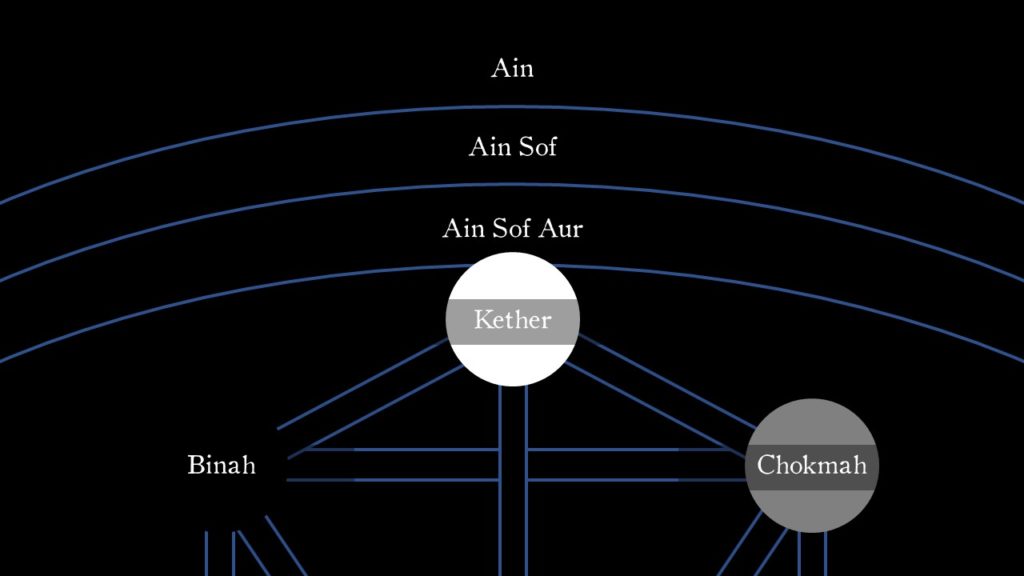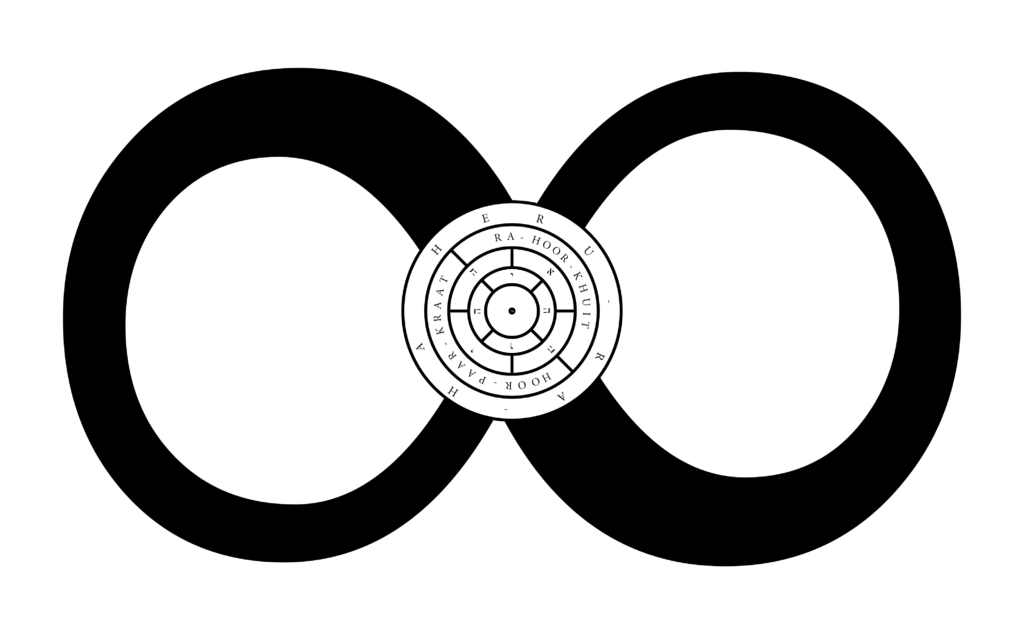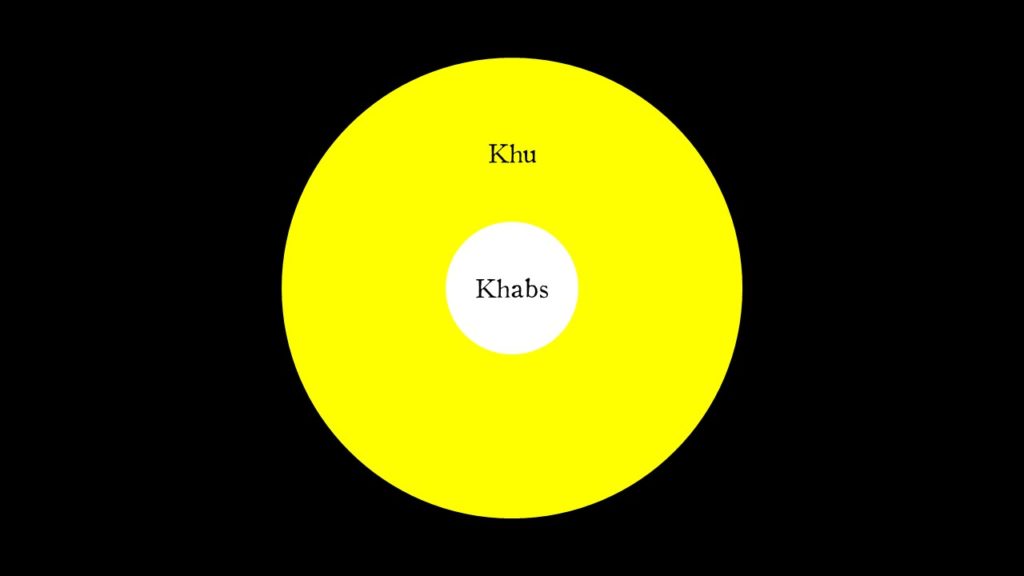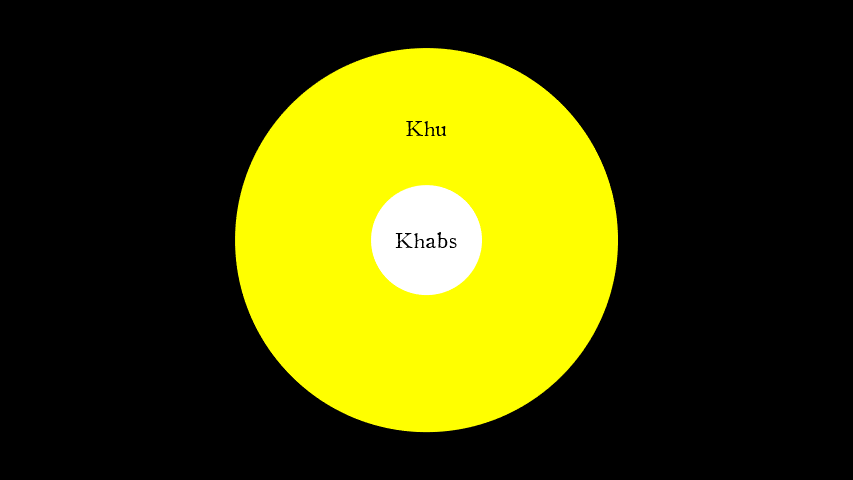
Another relationship I establish at the beginning of the video is between the soul (which in Thelema is called the star) and the Tree of Life of Qabalah. (I use Kabbalah when talking about the Jewish mystical tradition itself and Qabalah when talking about the interpretation of it by the Golden Dawn and Crowley.)
Tree of Life/Qabalah Basics

That such a relationship exists shouldn’t be a surprise. The Tree of Life diagram is meant to show the relationship between the soul (the microcosm) and the four worlds (the macrocosm).
The bottom circle or sephira, Malkuth (“kingdom”), is Assiah (“the world of action”). It is often identified with the material world, although for reasons we’ll get into later, that is not necessarily the case in Thelema.
The microcosmic correlate of Malkuth/Assiah—the part of the soul that resides there—is the Nephesh. This is sometimes translated as “animal soul”. It is the part of the individual that is sentient, i.e., which experiences sensations and feelings.
Going upward from Malkuth, the next six sephiroth are Yesod (“foundation”), Hod (“splendor”), Netzach (“victory”), Tiphareth (“beauty”), Geburah (“severity”), and Chesed (“mercy”). Together they comprise the macrocosmic realm of Yetzirah (“the formed world”). Yetzirah is also known as Zeir Anpin or Microprosopus, the Lesser Countenance (in contrast with Arich Anpin/Macroprosopus).
The part of the soul that resides in Yetzirah is called the Ruach (“spirit”). It is typically identified with the moral soul or the discriminating capacity.
Above that we have Binah (“understanding”) and Chokmah (“wisdom”). Together they comprise Briah (“the world of creation”). This is analogous to the world soul of Neoplatonic philosophy.
The part of the soul that resides in Binah is called the Neschamah, the intelligence or divine intuition. The part of the soul that resides in Chokmah is the Chiah, which in Thelema it is identified with the creative will or impulse of Jechidah.
Jechidah is the “quintessential principle of the soul,” and it is identical with Kether, the uppermost sephira on the diagram, which is analogous to the One of Neoplatonic philosophy.
All three of the “supernal” sephiroth—Binah, Chokmah, and Kether—transcend time, but Kether also transcends being and non-being. It transcends opposition all-together.

“Beyond” Kether there are the purely transcendent, incomprehensible aspects of divinity, which in Kabbalah are called Ain (Nothingness) and Ain Sof (without limit/infinity). The Hermetic Qabalah of Knorr von Rosenroth and the Golden Dawn includes Ain Sof Aur (limitless light) as a third “negative veil”.
In Kabbalah Ain and Ain Sof (being and nothingness, essentially) are considered to be identical with one another, and Ain Sof is for all intents and purposes identical with Kether.
Qabalah and Thelema

Kether (Heru-Ra-Ha) as the Manifestation of the Interaction between Nuit (infinity) and Hadit (the inverse of infinity) (more…)
Thelema is not traditional Jewish mysticism, although Crowley used the terminology and the framework of Qabalah in order to express his own ideas and intentions.
So you find the same idea of a macrocosm divided up into four worlds, and there are parts of the soul which correspond to or “live” in those four worlds, so that the individual’s life or experience is divided across different realms which are ultimately (mystically) one realm.
In Thelema the macrocosm is composed of the interplay or interaction between two principles, Nuit and Hadit.
Nuit represents the sum total of all possibility. She is infinite space. Hadit represents any particular point of view on those possibilities. He is the infinitely small point.
Nuit is analogous to Ain Sof (infinity) in classical Kabbalah, and Hadit is analogous to Ain (nothingness or the inverse of infinity). Their interaction gives rise to Ra-Hoor-Khuit (sometimes also called Heru-Ra-Ha to include Hoor-paar-kraat), the Crowned and Conquering Child, who is also Ain Sof Aur or Kether.
Since Kether is “pregnant” with Tetragrammaton, you get the familiar breakdown into the remaining nine other sephiroth and the four worlds.
The Khabs and the Tree of Life

In Thelema the immortal soul of the individual is called the star. This comes from AL I.3 (The Book of the Law, chapter 1, verse 3):
Every man and every woman is a star.
Crowley subdivides the soul or star according to the usual schema of Jechidah, Chiah, Neschamah, Ruach, and Nephesh, but he introduces another subdivision based upon AL I.8-9:
The Khabs is in the Khu, not the Khu in the Khabs. Worship then the Khabs, and behold my light shed over you!
Khabs and Khu are Egyptian terms. In the context of Thelema, Khabs is the “House” of Hadit. Hadit as we saw is the individual point of view on Nuit. Khabs then is the manifestation of that unique interaction. You can think of it almost as the light given off by the energetic interaction between Hadit and Nuit. And in fact in the Golden Dawn—where Crowley would have first encountered this term—Khabs was used as synonymous with light as in the phrase Khabs am Pekht, which means “light in extension” (cf. Ain Sof Aur above).

In Thelema the whole of the supernal triad—Kether, Chokmah, and Binah—is considered to be the Khabs. Kether is the essence of the Khabs, taken in and of itself, which is also called Jechidah. Chokmah represents Chiah, the creative impulse or will of the Jechidah. In other words, Chokmah/Chiah represents the mode of going or expression which is characteristic of this particular Khabs or soul. And finally Binah represents the Neschamah of the Khabs. It is the intelligence or intuition of what the Khabs wishes to discover about itself.
It might help to translate these terms into those of ordinary self-conscious.
I have a self which seems stable over time. This is like the Jechidah or Kether. That self or subject is capable of generating thoughts and other mental states. The analog in the supernal triad would be Chiah or Chokmah. Finally, when I hear thoughts in my head, I am able (if I am not insane!) to recognize them as mine. This capacity of self-recognition is analogous to Neschamah or Binah.
Both ordinary self-consciousness and the supernal triad have this triadic or circular structure.
That’s plenty for today. Here are the main takeaways:
- In Thelema the soul of the individual is called the star.
- The star is divided up into the Khabs and the Khu.
- The Khabs is the House of Hadit (the individual point of view on Nuit).
- The Khabs is identified by Crowley with the supernal triad of the Tree of Life: Kether, Chokmah, and Binah.
Next time we’ll consider the Khu and its relationship to the Khabs and the Tree of Life.